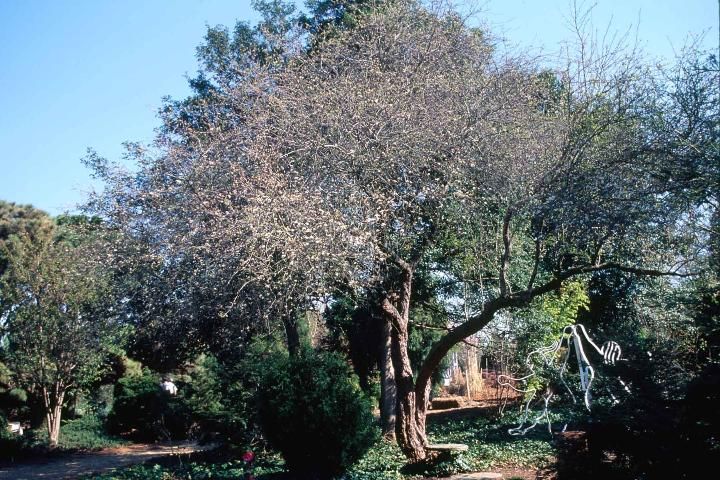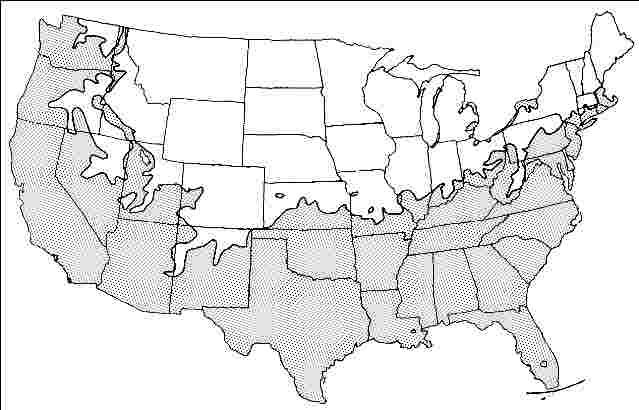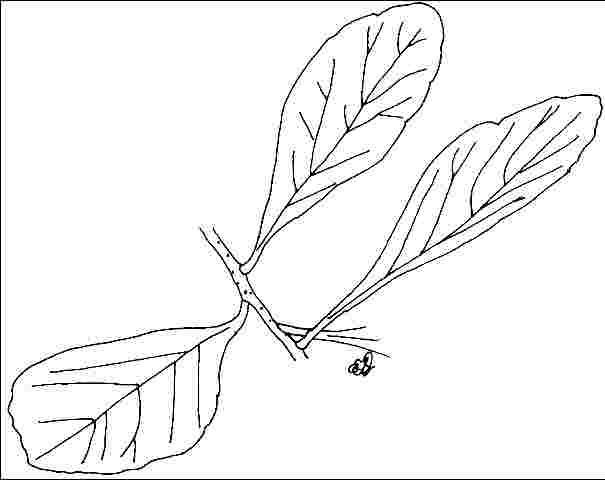Crataegus aestivalis: May Hawthorn1
Introduction
This slow-growing native North American tree reaches a height of 30 feet with a rounded canopy that spreads to 35 feet or more. The dark green, deciduous leaves are often three-lobed and have red/brown undersides. The leaves display no appreciable fall color. The sparkling white, showy springtime flowers appear before the new leaves unfurl and are followed by the production of large, red-dotted fruits. The spreading, low branching habit of growth makes this best suited for planting in a large open area of turf. If regular pruning can be provided to keep low, drooping branches pruned, it can be located closer to a walk.

Credit: Ed Gilman
General Information
Scientific name: Crataegus aestivalis
Pronunciation: kruh-TEE-gus ess-tih-VAY-liss
Common name(s): May Hawthorn, Apple Hawthorn
Family: Rosaceae
USDA hardiness zones: 6A through 11 (Fig. 2)
Origin: native to North America
Invasive potential: little invasive potential
Uses: reclamation; screen; highway median; specimen
Availability: not native to North America

Description
Height: 20 to 30 feet
Spread: 35 to 40 feet
Crown uniformity: symmetrical
Crown shape: vase, spreading
Crown density: dense
Growth rate: slow
Texture: fine
Foliage
Leaf arrangement: alternate (Fig. 3)
Leaf type: simple
Leaf margin: crenate, serrate
Leaf shape: obovate, elliptic (oval)
Leaf venation: pinnate
Leaf type and persistence: deciduous
Leaf blade length: less than 2 inches, 2 to 4 inches
Leaf color: green
Fall color: no color change
Fall characteristic: not showy

Flower
Flower color: white/cream/gray
Flower characteristics: showy
Fruit
Fruit shape: round
Fruit length: .5 to 1 inch
Fruit covering: fleshy
Fruit color: red
Fruit characteristics: does not attract wildlife; not showy; fruit/leaves not a litter problem
Trunk and Branches
Trunk/bark/branches: branches droop; not showy; typically one trunk; thorns
Pruning requirement: needed for strong structure
Breakage: resistant
Current year twig color: brown
Current year twig thickness: thin, medium
Wood specific gravity: unknown
Culture
Light requirement: full sun, partial sun or partial shade
Soil tolerances: clay; sand; loam; acidic; slightly alkaline; well-drained
Drought tolerance: moderate
Aerosol salt tolerance: unknown
Other
Roots: not a problem
Winter interest: no
Outstanding tree: no
Ozone sensitivity: unknown
Verticillium wilt susceptibility: resistant
Pest resistance: resistant to pests/diseases
Use and Management
May Hawthorn should be grown in full sun or partial shade on well-drained, moist soils. According to Dr. J. C. Raulston at North Carolina State University, this may be one of the best Hawthorns for the south due to superior disease resistance.


